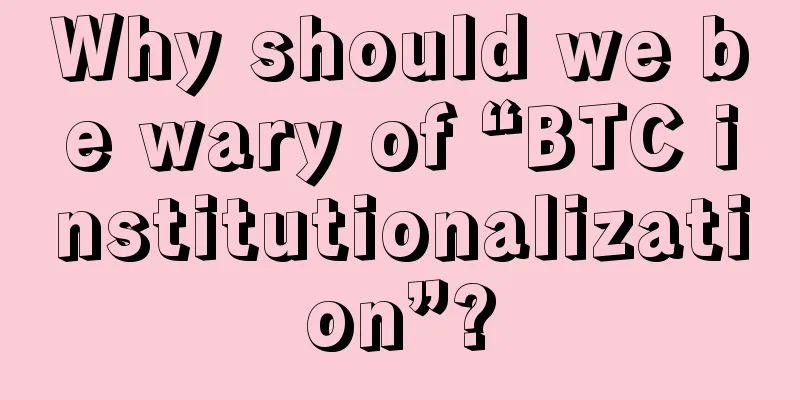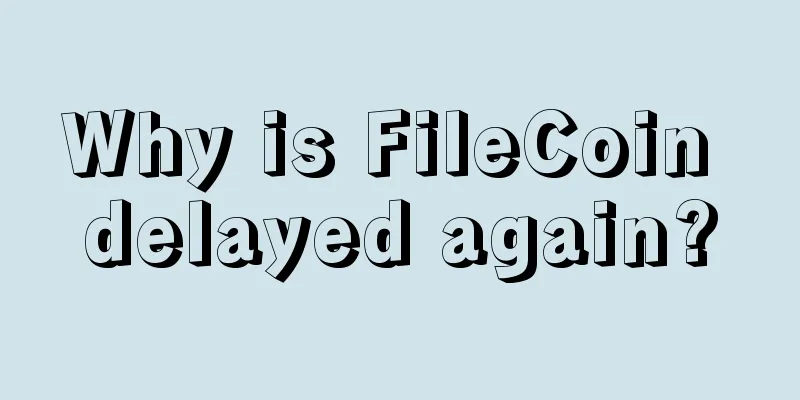Why should we be wary of “BTC institutionalization”?

|
"Financial advisers just want a simple narrative." What is the meaning of Bitcoin?With a series of well-known financial institutions recently announcing the launch of Bitcoin derivatives, the institutionalization of the largest and most important cryptocurrency is coming. Although insiders are excited about the expectation of institutional entry (pumping), I see that this may change the fundamental attributes of Bitcoin. Bitcoin is an alternative store of value, similar to gold, and its price is driven by its existence as a firewall against the debasement of fiat currencies. (We can call this Michael Saylor’s view.) Is it a payment tool for people who, for whatever reason, are excluded from the financial system? (Maybe call it the Salvadoran view.) Is it an activist tool, a mechanism for challenging power? (Human Rights Foundation view.) Or take a more open-minded view and see it as an unstoppable recording platform where users can record all kinds of valuable content? (Taproot Wizards' view.) I tend to think the answer is "all of the above". But those free, open interpretations might be disregarded if the Securities and Exchange Commission (SEC) approves recent exchange-traded fund (ETF) applications from BlackRock, WisdomTree or Invesco — admittedly a big “if” given the SEC’s past intransigence — and if it backs the newly launched EDX cryptocurrency exchange from Fidelity, Charles Schwabb, Citadel and other financial giants. Because financial advisers who sell these products to mainstream clients prefer to tell a simple story. The question is: Which view is the best? Inflation hedge?Perhaps the most honest way to describe Bitcoin is to describe it as an uncorrelated asset whose price moves over time independently of other assets, providing more stability to a diversified portfolio and preserving value when stocks, bonds or commodities fall. But for financial advisors and their average investors, this description may not be satisfying enough. While they are well trained to think in terms of diversification and hedging risk, there is usually an event-driven narrative behind it. For example: when a recession approaches and expected returns fall, the decline in the value of your variable income stock assets will be balanced by fixed income assets such as holding bonds. That’s the “inflation hedge” story often told for Bitcoin. But it’s not so easy to explain. In 2022, when inflation hit the global economy, Bitcoin lost money, violating a popular short-term understanding that inflation hedges should rise when price increases for consumer goods accelerate. On the other hand, from a long-term perspective, the narrative of Bitcoin as an inflation hedge is tenable. With a 150-fold increase over the past decade, Bitcoin has helped long-term holders offset the continued erosion of the dollar’s purchasing power more effectively than other widely available investments. The problem is that the financial industry wants a short-term narrative — after all, finance professionals are typically rewarded based on quarterly performance . They want: If X happens to Y, then Z will happen to Bitcoin. But the facts are not so predictable. Still, I think Wall Street will gravitate toward Saylor’s view. It needs to find some kind of story — while many ETF investors may happily bet on Bitcoin’s price increase without caring why, this heavily regulated industry can’t frame things as gambling — and the concept of a long-term store of value is the easiest to accept. The easiest way to explain it is as the “digital gold” story , which has a ready analogy that is very familiar to American investors: an asset that can behave independently of monetary policy. (Skeptics will naturally point to the aforementioned 2022 experience, when the price of Bitcoin fell while the price of gold rose as expectations of Fed rate hikes grew. Wall Street ETF salesmen will have to counter all this with a story about a long-term holding strategy.) InfluenceOne of the importance of this story is that it will help determine the direction of policy. If Bitcoin is viewed purely as a hedge for investors, it will be in line with the regulatory push that continues in Washington, D.C. Although Bitcoin has escaped the current regulatory scope of the SEC, labeling other crypto tokens besides ETH as "securities" will strengthen other regulatory positions that may indirectly limit the growth of Bitcoin's use, although it may not affect its price. The most important issues relate to privacy, KYC, etc. If institutions recognize Bitcoin as a form of money — in addition to or instead of viewing it as an investment vehicle — then the case for allowing greater privacy is stronger. But if the conversation in the U.S. now places more emphasis on store-of-value investment strategies, it would be hard to argue against regulators imposing stricter KYC requirements. After all, these investment institutions, for whom compliance with these rules is a matter of course, have nothing to lose in supporting such monitoring. (If consumer demand is as strong as some financial institutions suggest, they have a lot to gain, even at the bottom of a bear market.) This is not good news for the millions of people who want the Bitcoin protocol to be a financial tool or to move money securely in oppressive regimes. It’s also not good news for the new generation of developers working on Bitcoin-based tokens, such as the Taproot Wizards project or the new BRC-20 tokens built on the Ordinals protocol, which are similar to non-fungible tokens (NFTs). KYC at the exchange level prevents these innovative projects from having a global mainstream impact, especially if initiatives like the Financial Action Task Force’s cryptocurrency “travel rule” find a backdoor way to indirectly force self-hosted wallets to report. Let’s take a deep breath. In the words of those fans who see Bitcoin as the “honey badger of currencies,” the bottom line is, “Bitcoin doesn’t care.” No matter what Washington or Wall Street does with its investments and token trading, the network will continue to run and block after block will be mined. The Bitcoin protocol is unstoppable. In fact, if an ETF is approved and mainstream investment pours into Bitcoin, which will drive up the price and attract more hash power to the mining network, the attack cost security philosophy behind the Bitcoin protocol — the essence of its “unstoppability” — will become even more powerful. Innovators will continue to do what they have always done in the face of this open source unstoppable, uncensorable protocol: innovate. Therefore, there will inevitably be solutions to all of this. New ways to tap into all of the other Bitcoin use cases that are unfettered by regulation from Washington and Wall Street will emerge. |
<<: Bankless: Wall Street wants Bitcoin
>>: A quick look at the 5 projects that Binance Labs is investing in by 2023
Recommend
Can you tell a lustful man by his appearance?
Can you tell a lustful man by his appearance? Phy...
IPFS Force Zone × Force Field: Filecoin’s Ecosystem and Current Status
This article was originally written by Joss from ...
Palmistry: Do you have an unforgettable love?
Palmistry: Do you have an unforgettable love? Pal...
How to judge whether to get married early or late from the marriage line
1. The length of the marriage line In palmistry, ...
What does it mean if there is no career line on the right hand?
The lines in the palm of your hand represent diff...
What do women with good luck usually look like?
In fact, many times, we all hope that a certain k...
Look at the face of the man who knows what kind of face belongs to the king
Big nose with power People with big and powerful ...
Men who are prone to mental infidelity
Men who are prone to mental infidelity In real li...
Is businessman-president Trump to blame for crypto market decline?
Half a month has passed since Trump officially to...
What does a mole on a woman's right chin mean?
Traditional physiognomy covers a wide range, among...
People with these palm lines are born with no worries about money!
Nowadays, it is really difficult to do anything w...
What does a mole on a woman's neck mean?
Everyone is very familiar with moles, because we ...
Phoenix eye pattern palmistry diagram, those who have it are winners in life
When we usually pay attention to our palms, we usu...
Why is the forehead shining? Come and see
People with a shiny forehead are blessed and have...
Hang Seng Bank: Will not miss the innovation event of "blockchain" technology in the financial industry
At the recently held first working meeting of the...









